What exactly is Holy Basil? This herb, also known as Tulsi, is an incredible healing herb with numerous benefits, leaving you to ask, “What can’t it do?!” Learn all about this “Queen of Herbs”—plus, find recipes and growing information.
What is Holy Basil (Tulsi)?
A part of the large and beloved mint family, tulsi is in good company alongside rosemary, sage, all mints, basil, and many more. Native to the lowlands of India, as well as Sri Lanka, Pakistan, Bangladesh, Myanmar, southern China, Thailand, and Malaysia, tulsi, also known as Holy Basil, has been beloved and used for centuries not only for its physical medicinal properties but also for its spiritual offerings.
You can find this sacred herb growing at the entrance of temples and homes. Sacred to the Hindu god Vishnu, it is used in morning prayers to promote good health for both the individual and the family unit.
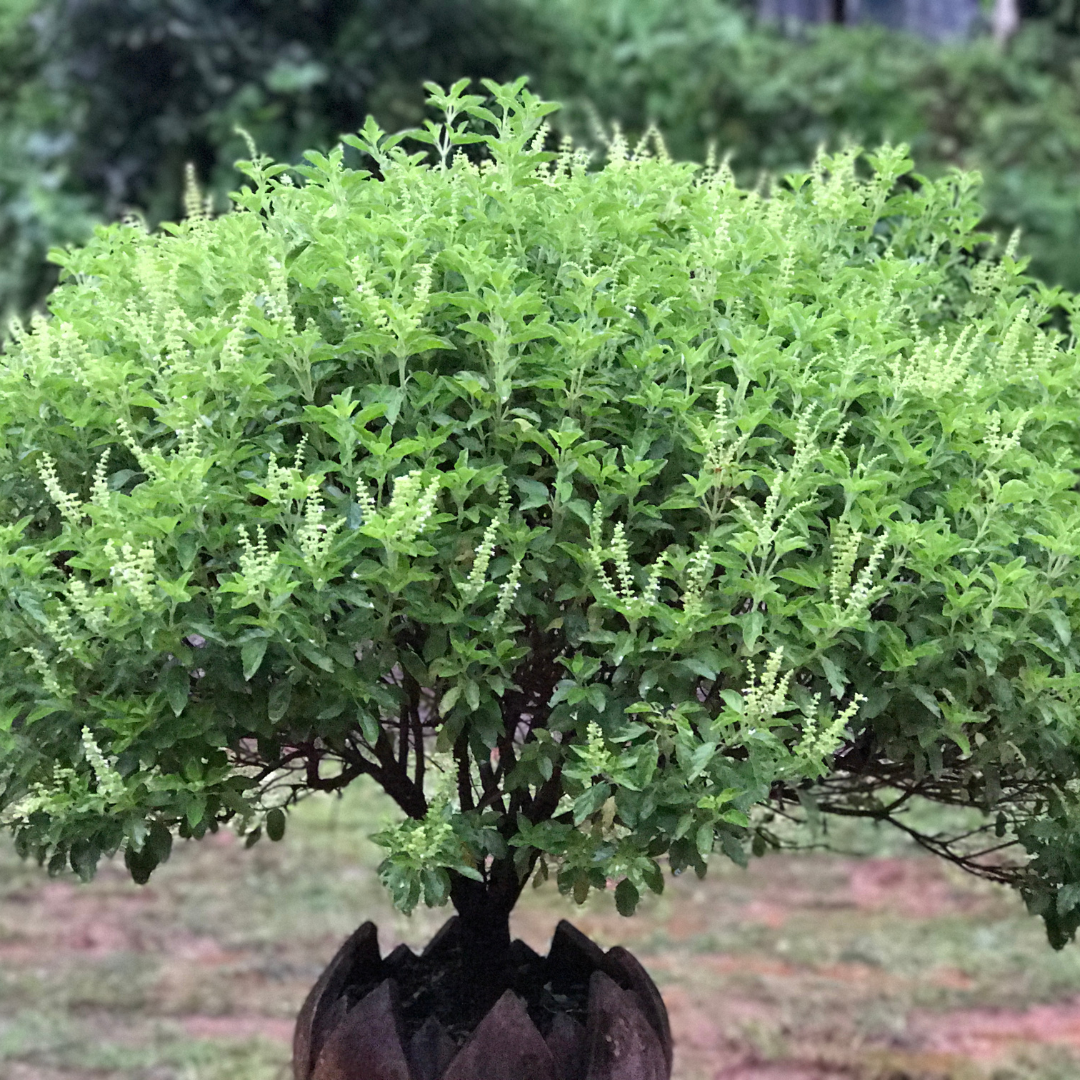
In India, tulsi can be found growing in domestic courtyards, as it is believed to help purify the atmosphere by breaking down chemicals and dispelling disease-carrying viruses and bacteria.
Health Benefits of Holy Basil (Tulsi)
Holy basil (Tulsi) has a long tradition in herbal medicine. According to the Cleveland Clinic, this herb is classified as an adaptogen, meaning it may help the body better respond to stress (although clinical evidence remains limited).
Stress, Anxiety, Mood, and Sleep
According to the National Institute of Health, holy basil supplements taken over 8 weeks helped adults with stress to:
- Reduce Stress Levels
- Reduce Anxiety
- Reduce Fatigue
- Improve Sleep Quality
Metabolic and Anti-Inflammatory Effects
Early evidence also suggests that holy basil helps with the following:
- Lowers blood sugar in people with metabolic disease,
- Improves lipid markers, and
- Reduces inflammation via antioxidant properties.
Because the evidence is preliminary, it is best to treat these findings as promising possibilities.
Tulsi Tea & Infused Water Recipes
Holy Basil & Mountain Mint Infused Water
One of my favorite ways to use tulsi is to dry its leaves to make tea and infused water throughout the year. This infused water is so simple, refreshing, and absolutely delicious.
Ingredients
- One small handful of fresh tulsi
- One small handful of Mountain Mint
- Half of a fresh lemon, chopped
Add all the ingredients to your favorite pitcher, adding a bit of water, and then crush/mix with a spoon. Fill with water and refrigerate for a medicinal, delicious water.
Tulsi Rose & Ginger Tea Recipe
For a wintertime tea that supports the immune system and the emotional body, I love this blend:
Ingredients
- Two tablespoons dried crushed tulsi leaves
- Two tablespoons dried crushed rose petals
- One tablespoon sliced fresh ginger
I prefer using a glass teapot with a built-in strainer, as I always brew loose-leaf teas. Tea bags simply aren’t as potent as bulk or fresh herbs. I love being able to add as much of the herb as I like to create unique blends. And when we use herbs as medicine, tea bags don’t offer medicinal doses. I digress.
Add your herbs to your teapot and pour over your hot water (160°F to 175°F). Steep for 5 to 10 minutes and then enjoy.
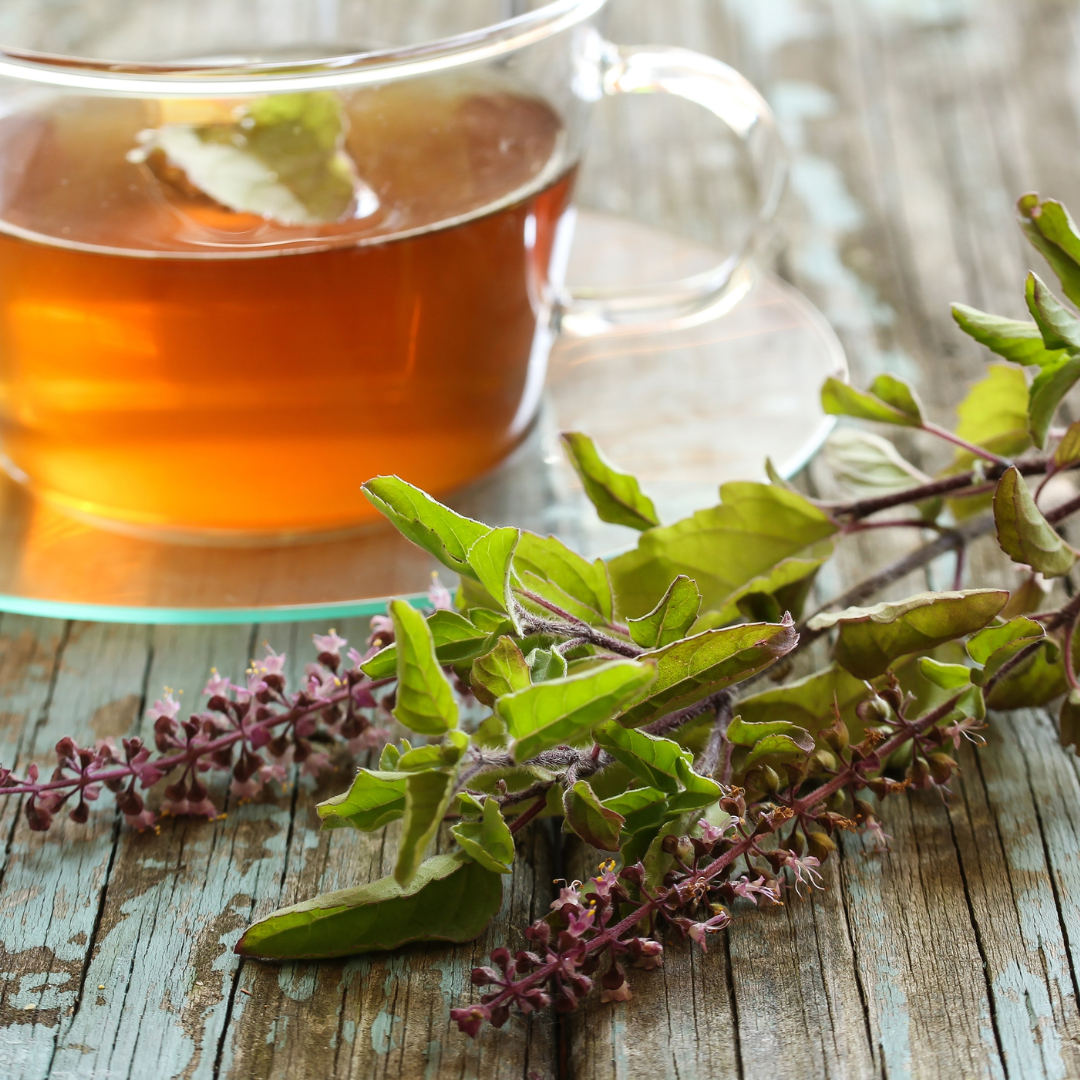
Growing Tulsi in the Garden
I recommend Tulsi as one of the six healing herbs if you are starting a medicine garden.
The most common variety of tulsi sold and grown in the United States is the Ocimum africanum variety, also known as the temperate tulsi. Being a plant that thrives in hot climates, this variety of tulsi does well in our more temperate regions. However, this variety, though very potent in scent and flavor, is the least medicinal.
I also grow Krishna (O. tenuiflorum), Rama (O. tenuiflorum), and Vana (O. gratissimum). These varieties are reportedly more challenging to grow in temperate zones, but being in Zone 6a, I successfully cultivated all four varieties. They thrive when they have good-quality soil and plenty of soil amendments, such as horse and chicken manure mixed into the soil before transplanting.
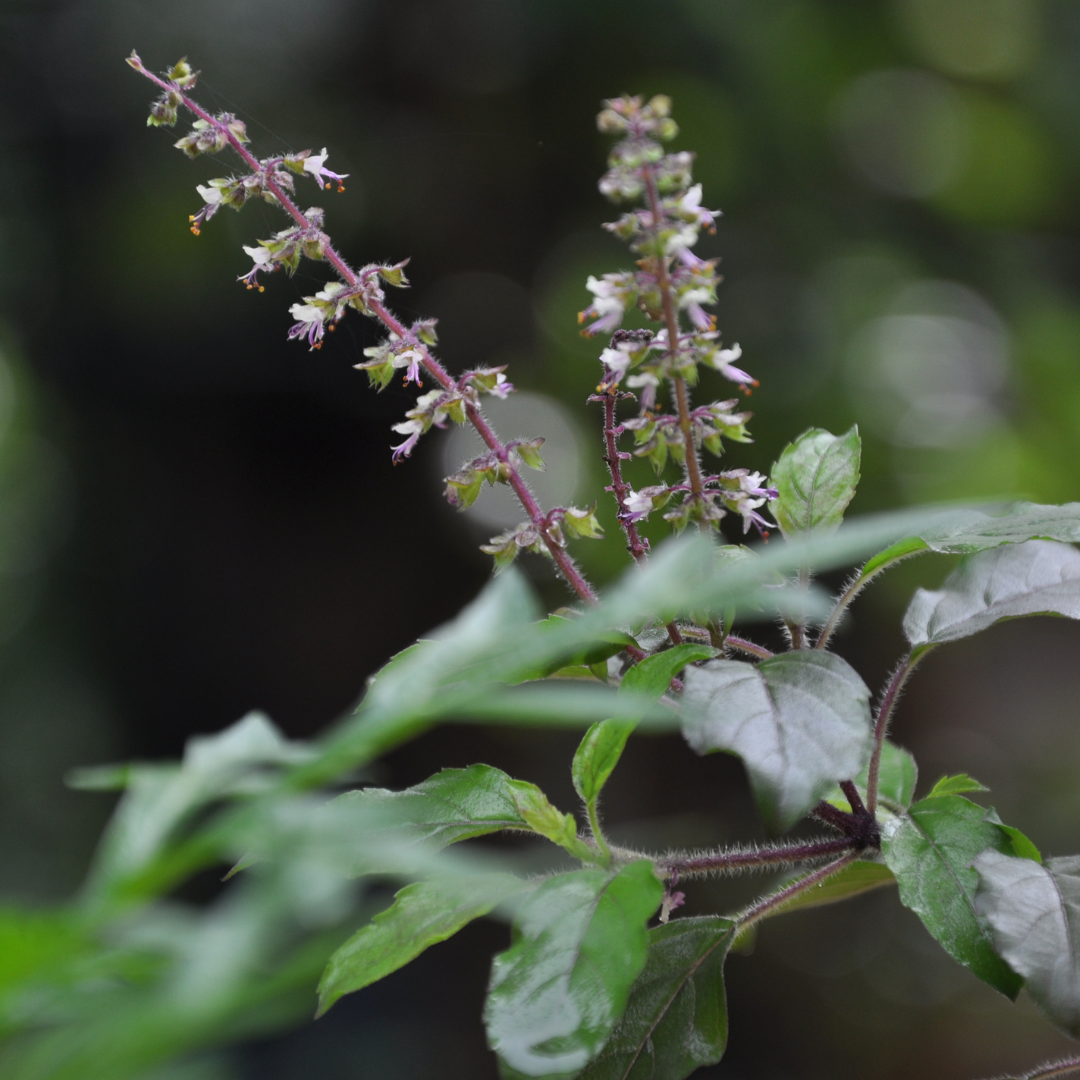
All varieties can be started indoors in late winter to early spring and then transplanted after the last frost. All varieties prefer full sun. Strictly Medicinal offers high-quality tulsi seeds.
Tulsi is an annual in more temperate climates. If you live in a cooler climate, consider growing it in a pot and bringing it indoors for the winter, provided you have a sunny, south-facing window available. If not, you can simply save the seeds and replant each year, which is what I like to do.
Harvesting, Drying & Saving Seeds
I like to harvest tulsi both before and during the flowering stage. Tulsi will provide two to three harvests before it’s time to let the plant fully flower and then seed. Tulsi is an incredible pollinator food; it is always full of bees and butterflies from the time it flowers to the end of the season.
To dry, I will either hang a small bunch upside down or I will lay the leaves out on a drying rack to air dry. You can also dehydrate at a very low temperature (only in an actual dehydrator, not an oven). When drying herbs, ensure they are not exposed to direct sunlight and have sufficient airflow. Store your dried leaves and flowers in a bag or jar for year-round use.
Learn more about drying herbs for tea.
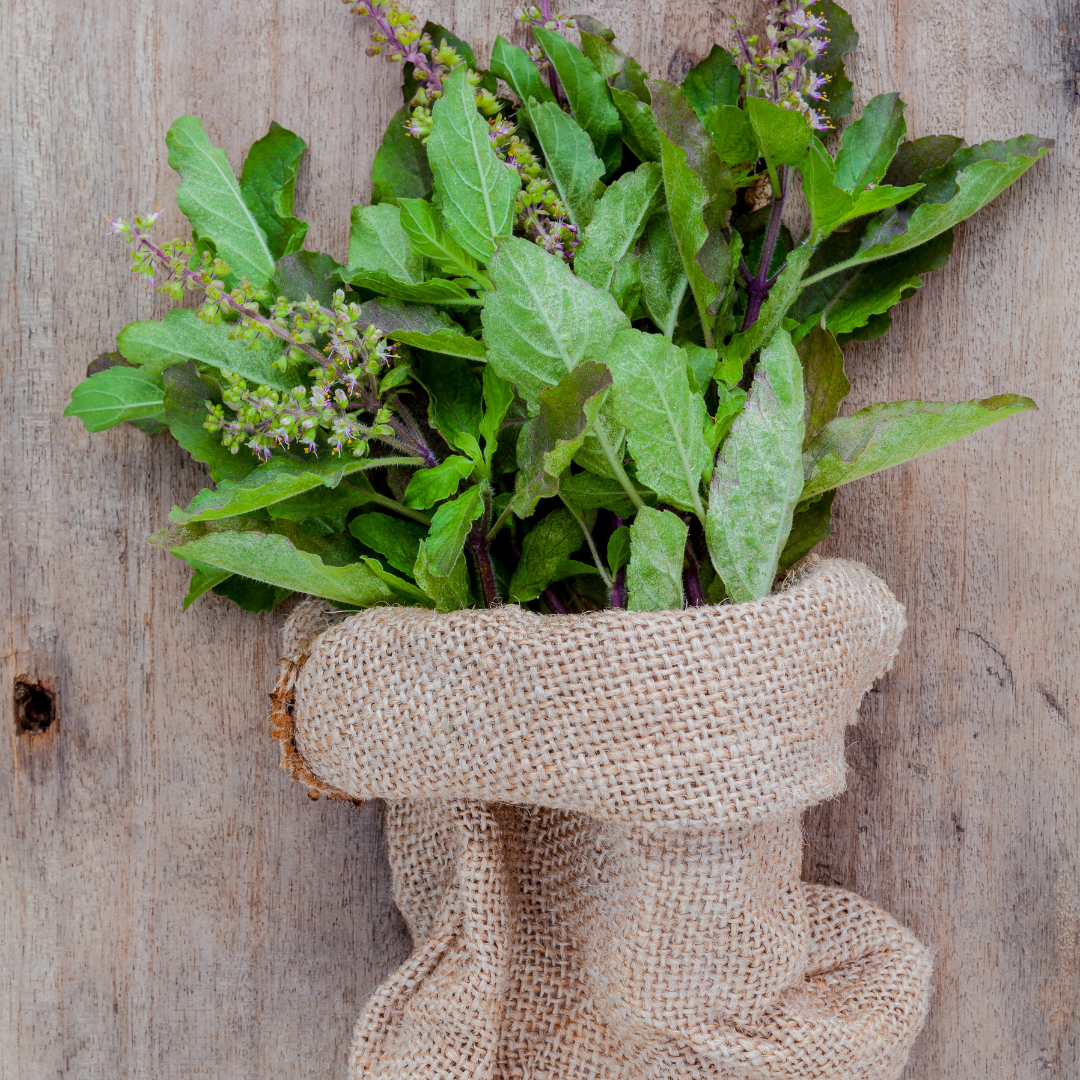
I have found that it’s very easy to save your seeds from your tulsi plants simply by allowing the seed pods to dry and brown before cutting the flowering tops from the plant in the Fall. Shake into a bowl or bag, and you have your tiny black seeds. Isn’t it amazing how our plant friends ensure abundance?
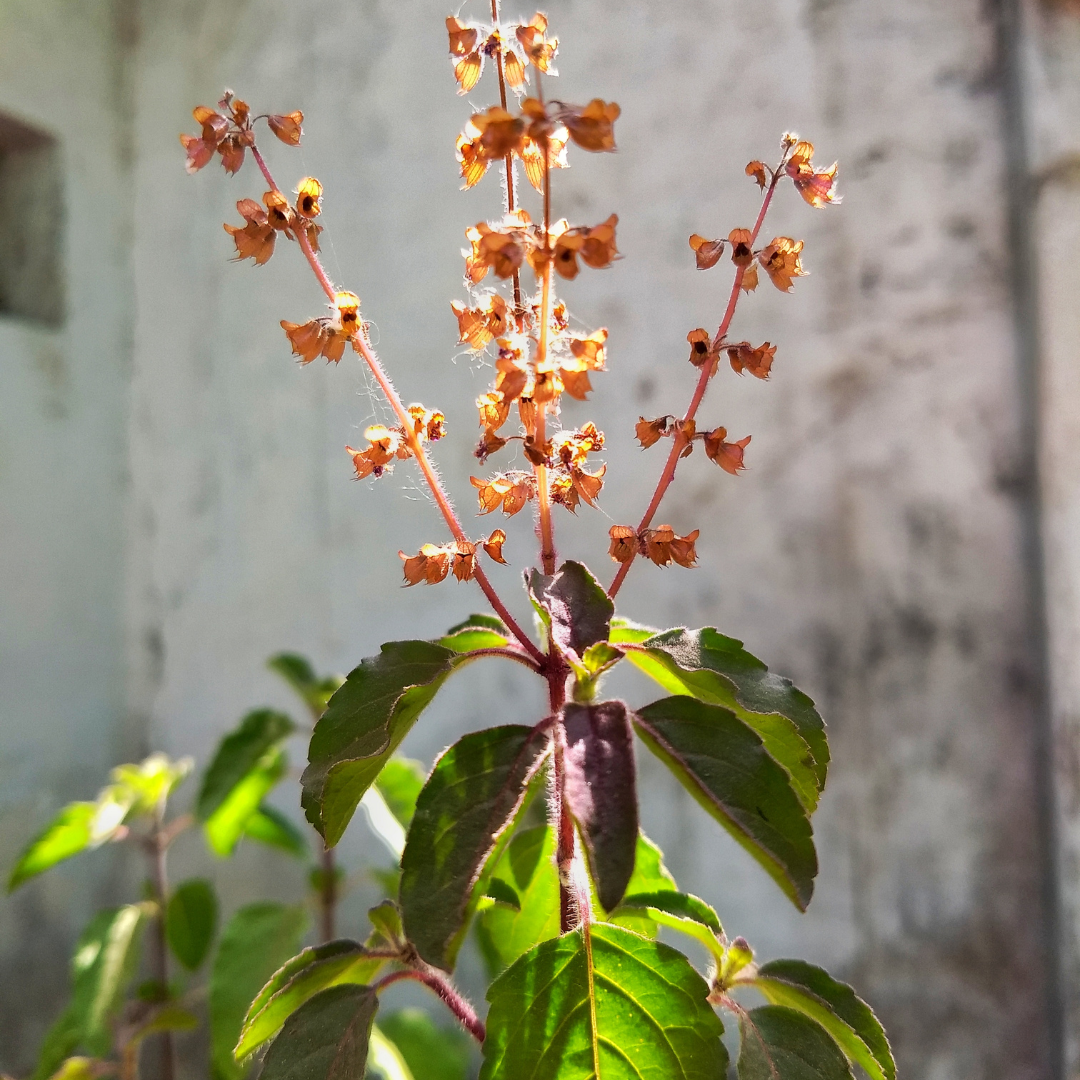
I have a feeling that once you grow Tulsi for the first time, you will make a permanent place for her in your garden. She is a valuable medicine and garden ally!
Cautions: In animal studies, it had an infertility effect, so use during pregnancy is not recommended, just in case. As with any herb or supplement that is new to you, use your discretion. It is possible to be allergic to any herb or food, so pay attention to how you feel after taking any new herb, including tulsi.
Ready to grow your own sacred garden? Start with Holy Basil and experience its healing magic—share your favorite way to use Tulsi in the comments!
Comments